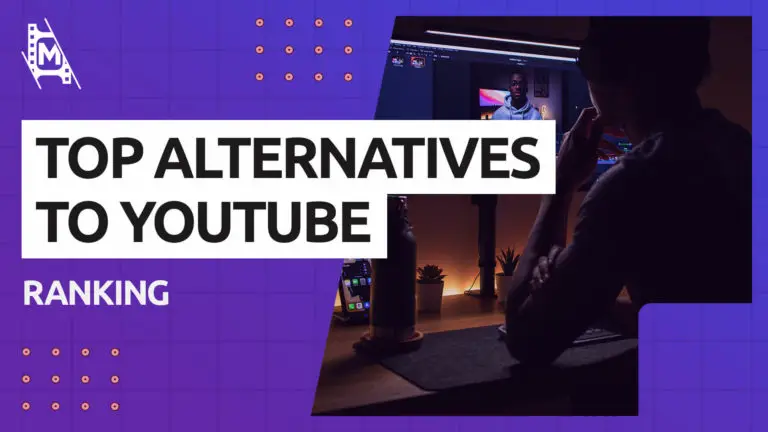To an aspiring content creator, the art form of video can be an exciting yet daunting career choice. This is even truer when you consider the countless content creators who are all vying for the same finite supply of viewers on YouTube. Establishing yourself as a reputable creator on the most popular video-creating platform in the world can be quite difficult.
Luckily, you don’t have to tough it out with just YouTube. There are many viable alternatives to YouTube that can help you establish yourself as a creator and get you on the way to monetization in no time! Some you might only have heard of for the first time, while others are well-established competitors; In any case, these are the top alternatives to youtube right now (we will cover each more in-depth below):
- Dailymotion – Best YouTube Clone
- Twitch – Best for Gamers
- Uscreen – Best for Monetization
- Flickr Video – Best for Short Videos
Reasons to Consider Alternatives to YouTube
Youtube is a world-renowned content-creating platform without a legitimate threat to its supremacy; however, this does not mean that YouTube is without its flaws. Regulations from the company may serve to negatively impact your growth as an upstart. Below you will find reasons to consider alternatives to YouTube.
The Ramifications of Policy Changes
A restrictive culture of policymaking has been developing at YouTube over the past couple of years. Some of these restrictive measures involve minimal requirements for video watch time and the number of subscribers you have.
For example, a relatively recent development with YouTube’s new eligibility requirements dictates that a channel is not eligible for monetization if it does not meet the 1,000 subscribers and the minimum requirement of 4,000 hours of watch time within the last 12 months. As you can imagine, such policymaking can serve as a deterrent for newcomers on the up and up.
Shared Revenue
Although YouTube is upfront with the parentages of revenue shares that it takes from its Youtubers, very few truly understand the concept. For instance, when advertisers play these ads on your channel, YouTube takes 45% of what the advertisers pay, which leaves you with a fixed rate of 55%.
The implication is that you will only ever earn a 55% share no matter how successful your channel becomes. Your growth gets capped at 55%. Scaling your income will be challenging unless your audience continues to grow rapidly and you continue to produce videos that outperform the competition.
If you want to learn more about how much money you can make on YouTube with examples, check out his guide.
Ad-Friendly Videos
Since YouTube is not only a place for creativity but a place of business, the videos get monetized if your audience is in line with an advertiser’s ideal customer profile. It is also beneficial for you as a content creator to understand your user base so you can give them the best videos.
There’s this constant balancing act that you have to strike between providing good content and not over-saturating your videos with ads or ad placement which can alienate your viewers. However, your videos have to be ad-friendly to make money. Furthermore, to increase your chances of making money, you’ll have to choose lucrative industries or industries that spend lots of money on advertisement.
The pressure of properly monetizing your content can be stressful and potentially derail the direction of your content altogether.
Highly Competitive
Youtube is indeed the most popular video streaming platform globally. This level of popularity comes with an equal amount of competition.
Let’s face it, the competition is fierce, and although there are 2 billion people who return to use YouTube each month, there are many creators all competing for their undivided attention. YouTube saw a jump of 40% in new channels in 2019. This heightened level of competition means that visibility and being higher within the ranks of creators will be challenging to achieve on this platform.
8 Alternatives to YouTube
Now it’s time to talk about the specific platforms that can serve as viable alternatives to YouTube for creators out there right now.
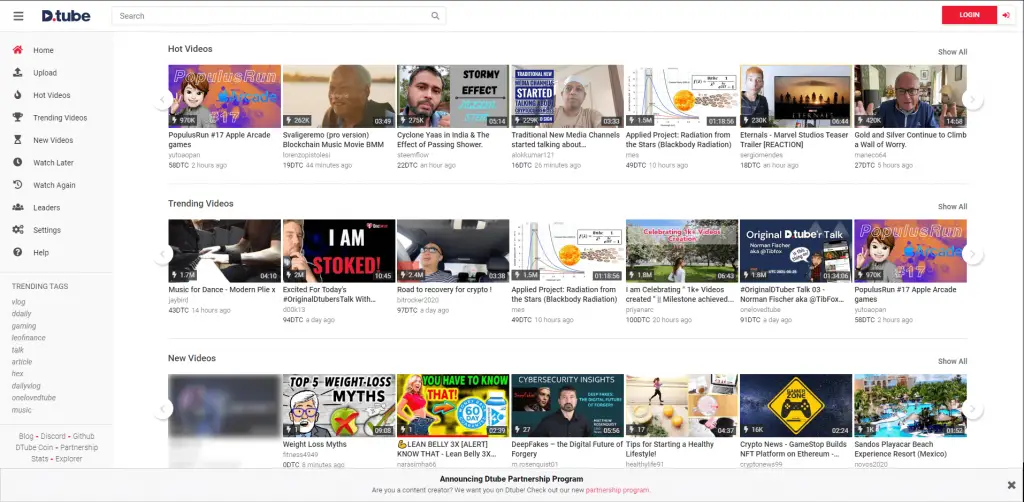
1. DTube (Best for Customization)
DTube is an entirely decentralized video platform. In other words, DTube’s videos aren’t uploaded and streamed from a central server, as is the case with YouTube. Every bit of DTube’s content is stored on a blockchain.
All of these features enable the platform to be privacy-focused, making it infinitely more difficult for hackers to tamper with your video or for your data to be leaked. It’s also interesting to know that the community controls the platform.
Moreover, DTube doesn’t have ads or even have a recommendation algorithm. The site supports free speech, and all content creators have a chance to earn cryptocurrency revenue. The site’s interface is easy to navigate since it is very similar to YouTube’s. Looking for an alternative to YouTube, try DTube today!
Pros:
Cons:
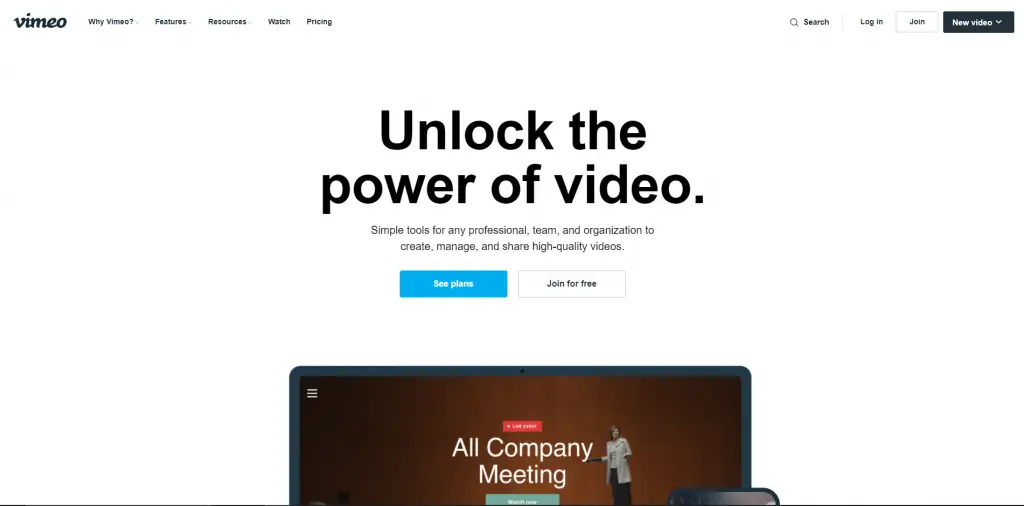
2. Vimeo (Best for Filmmaking)
Founded by filmmakers, Vimeo is a platform that attracts creative minds. Professionals such as photographers, musicians, video makers, and ad agencies all use Vimeo as a go-to platform. If you’re looking to be amused by snippets of content, then this platform isn’t for you.
With the basic account, creators can upload up to 500 MB per week, 5 GB with the “Plus” account, and 20 GB with the “Pro” account. There are also hardly any restrictions when uploading. The Pro version also allows you to sell videos on demand and receive 90% of the profit from the transaction.
Vimeo has a stellar interface and indeed outperforms YouTube when it comes to high-quality videos—such as 4K Ultra HD videos. This platform is also ad-free. Moreover, there’s a built-in community enabling users to share videos, follow channels, and comment on their accounts. Vimeo is one of the better sites for uploading quality videos.
Pros:
Cons:
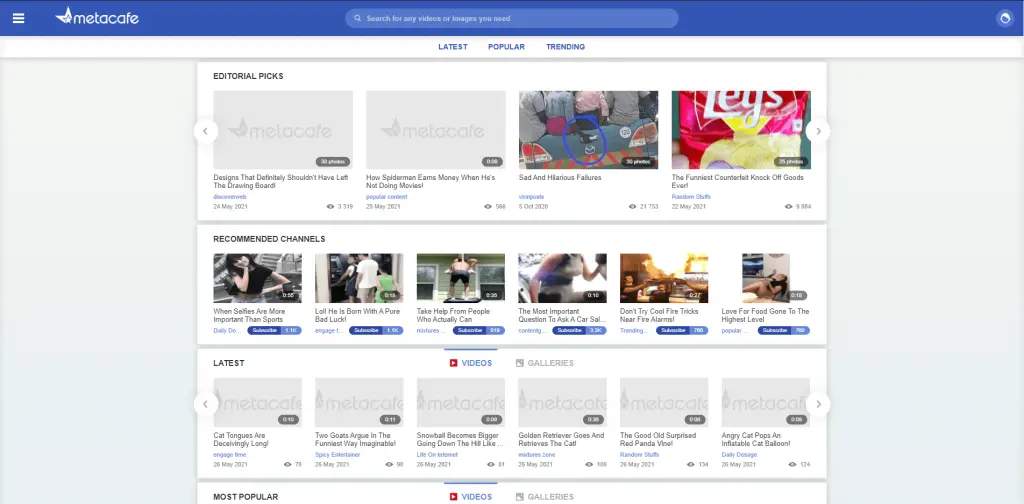
3. Metacafe (Best for Fun/Humor)
Metacafe is a basic video platform that happens to be even older than YouTube. The platform has a large number of videos that are up to 90s long. The video quality is low, especially when compared to other video platforms. On a better note, Metacafe does ensure that there are no duplicate videos on the platform.
Better yet, you can do unlimited uploads for free and partner with some professional media affiliates.
This platform is one of the best YouTube alternatives for individuals searching for quick how-tos, funny videos, and product reviews. Metacafe categorizes its videos into movies, video games, entertainment, sports, tv, and news. As with YouTube, viewers can subscribe to channels or view different playlists as well.
Pros:
Cons:
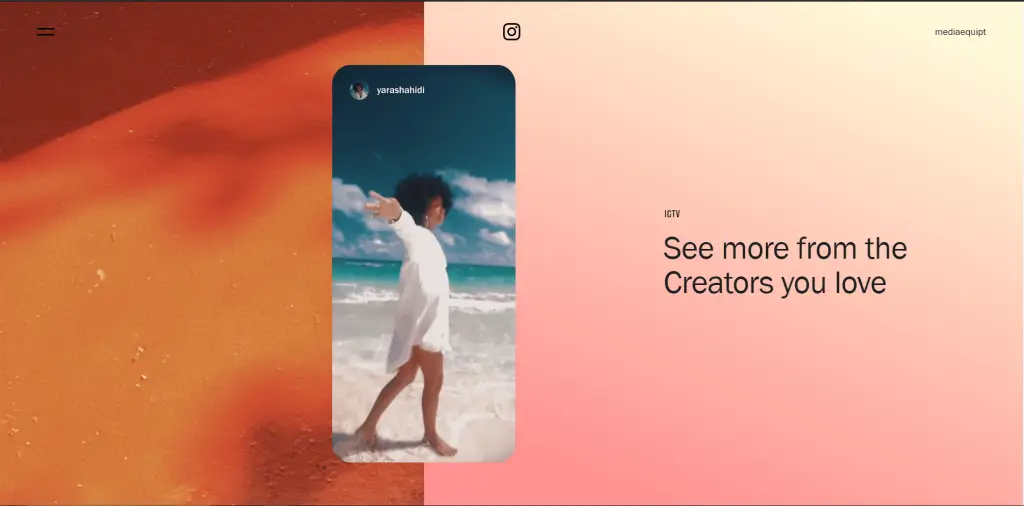
4. IGTV (Best for Popularity)
Mostly everyone is familiar with Instagram and the high number of celebrities that post pictures and videos about their lives daily. Content publishers have taken a liking to the access to millions of users that prefer Instagram at the moment.
Instagram is a platform that only uses an app, but you can upload videos through the desktop. And IGTV lets you upload long-form or short videos that your audience can stream through a smartphone.
Additionally, Instagram offers a 55% share for the ads that you put on your videos. You can also boost your profit by exploring monetization options with Instagram affiliate partners. Since so many businesses are using Instagram to market their products and services, many users have found that they can become brand ambassadors for some of their favorite labels by posting pictures and videos.
Pros:
Cons:
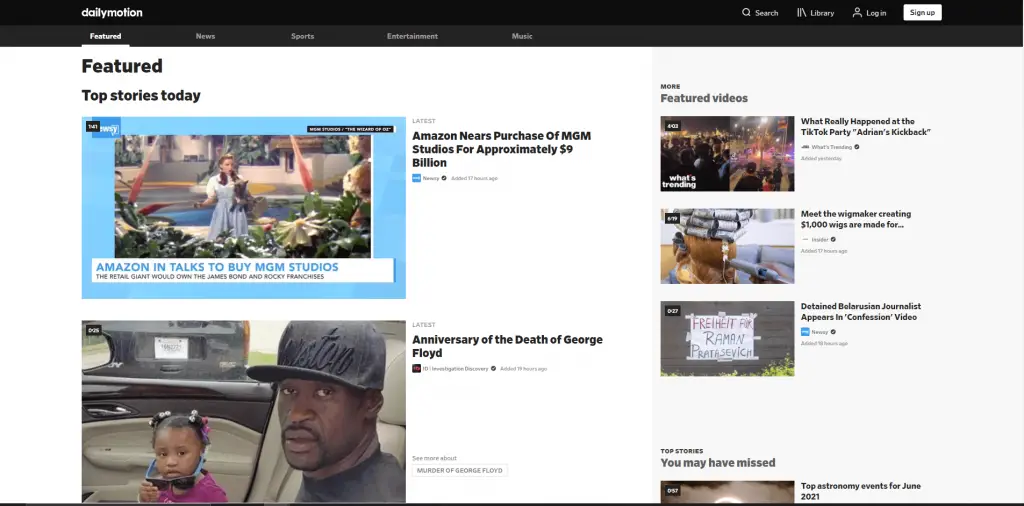
5. Dailymotion (Best YouTube Clone)
Dailymotion is probably the best alternative that’s closest to Youtube. This platform has around 315 million users, with over 3.5 billion videos uploaded or watched every month. The upload specifications are where Dailymotion shines for creators.
The video files uploaded can be up to 60 minutes in length and 2GB in size; these restrictions don’t apply to advanced account users. Uploaders can also choose between multiple audio and video formats such as, .mp4, .avi, .wmv, and .mov. Creators can also upload videos with 4K resolution.
Additionally, the layout is straightforward to navigate, and it’s visually appealing for creators that want to offer paid or premium content. You also get access to great monetization options.
Pros:
Cons:
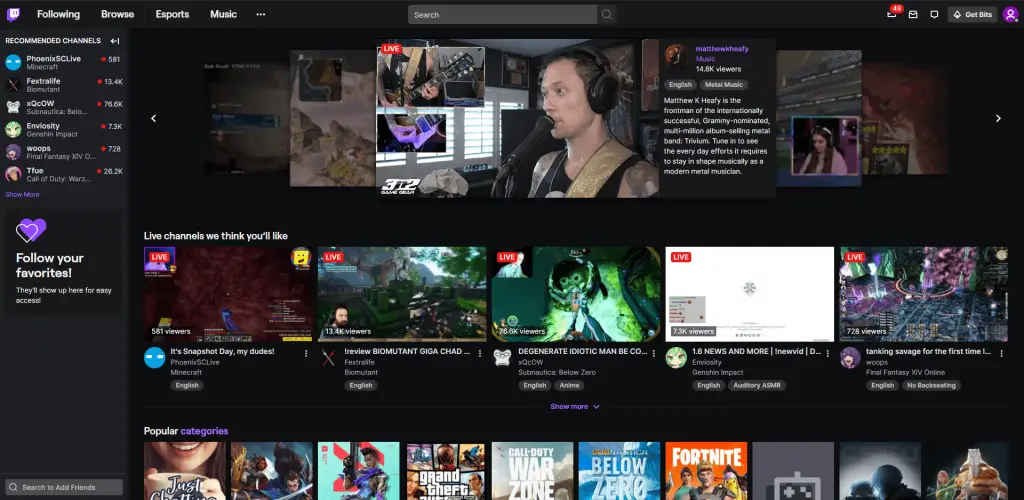
6. Twitch (Best for Gamers)
This site is an alternative to YouTube and is most popular with gamers. It’s a live streaming portal. The concept is the same in that content is free to all. If Twitch users register through Facebook or their email, they can access other features like chatting, adding friends, or following someone’s channel.
Anyone can stream content through Twitch, and many professional e-sport players use Twitch to gain sponsors and financial contributions for their gaming content.
Twitch also offers affiliate programs as another means to make a profit. To utilize these services, the streamer has to have a fixed audience and must stream regularly. They can then offer various subscription plans for a nominal fee.
Twitch is different from YouTube in that it offers only live videos instead of recorded videos.
Pros:
Cons:
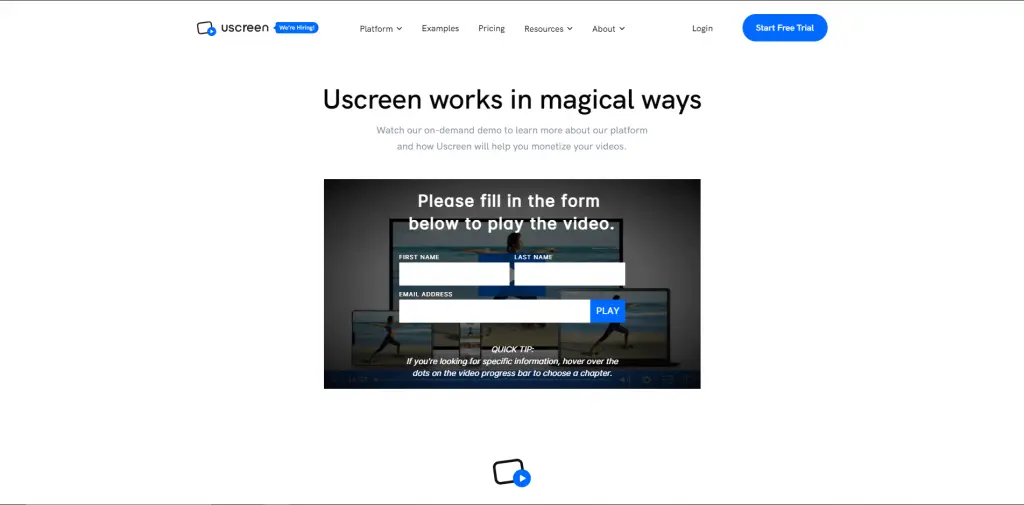
7. Uscreen (Best for Monetization)
Uscreen is the best alternative for monetization for a variety of reasons. For starters, Uscreen is very easy to use, it’s the leading OTT platform, and you can sell the videos you make in any way that you choose.
You can also stream to any device, track your subscriber growth, and have access to your audience’s contact information. This last feature isn’t possible with YouTube.
Uscreen also has community and marketing tools available to users. These tools assist you with increasing your profit. In this way, you can offer your subscribers coupons and gift cards, engage in email marketing, and directly engage with the audience.
You have access to in-depth analytics, over ten website themes that are ready to be customized to fit your brand. Plus, you can easily create an app without having prior knowledge of coding. The cost of membership is $49/month.
Pros:
Cons:
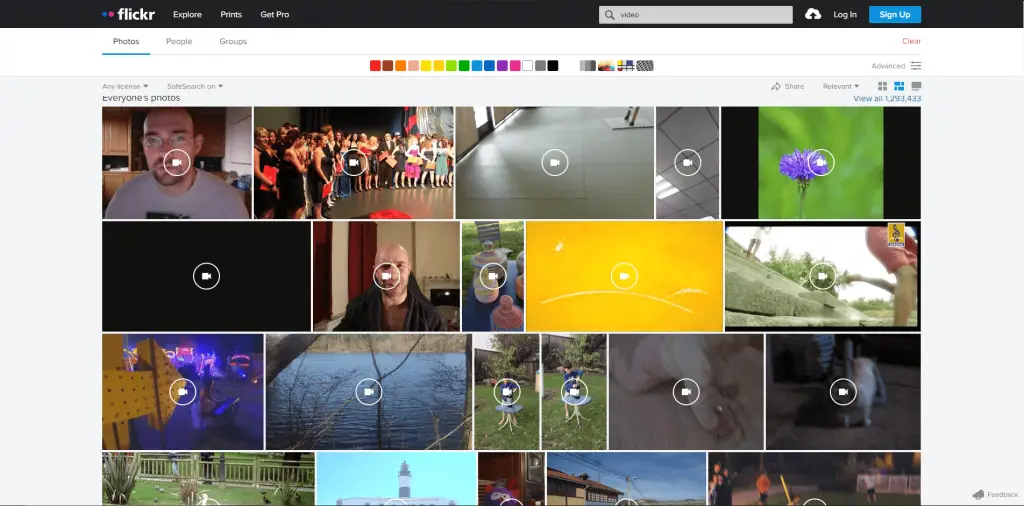
8. Flickr Video (Best for Short Videos)
Flickr is known for its pictures, but they also host an excellent platform for creators. They have around 122 million users in over 60 countries. The videos can be as long as 180 seconds in length. If you sign up for a free account, you can upload the video as you would if it were a photo. Various formats are accepted when you choose Flickr as your primary platform to create content.
A basic account allows for two videos every month. A Pro account lets you get unlimited memory, no advertisements, and a detailed statistics log that tells you how your content performs with your audience.
Pros:
Cons:
In Conclusion
In overview, we’ll say that Dailymotion is the closest you will get to YouTube while receiving a few different benefits. Vimeo stands out by offering high-quality content with exclusive features for creators while Twitch is an excellent website for a discussion niche of creators, the gamers.
Metacafe is perfect for creators who just want to capture their audience with short, light-hearted snippets. DTube offers an incredible amount of storage, which is a huge advantage. IGTV can reach the masses because of the popularity factor, while Uscreen provides a plethora of monetization benefits.
Each of the alternatives to YouTube is suitable for different reasons, and they target different crowds using unique strategies.
Whether you’re looking to improve your content creation by diversifying your platforms or just want a change of scenery from the highly competitive YouTube environment, any of the above recommendations are a good start. Hopefully, this guide helped you to find the top alternatives to YouTube for vlogging, live streaming, and community as a creator.
